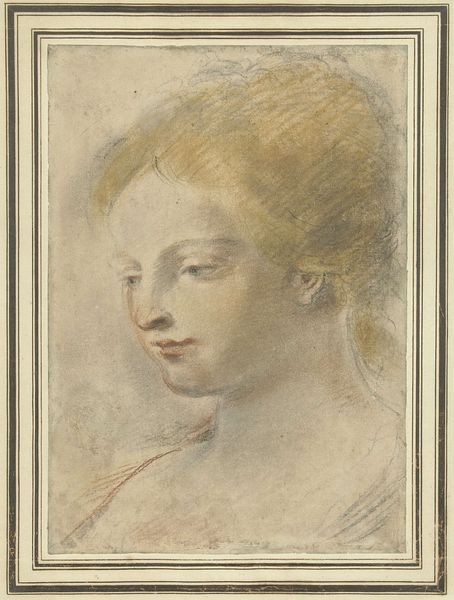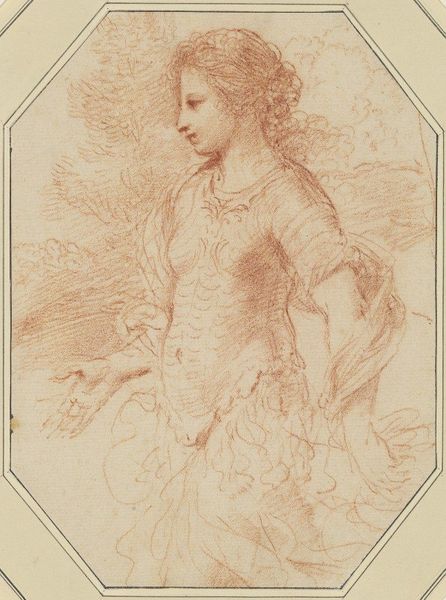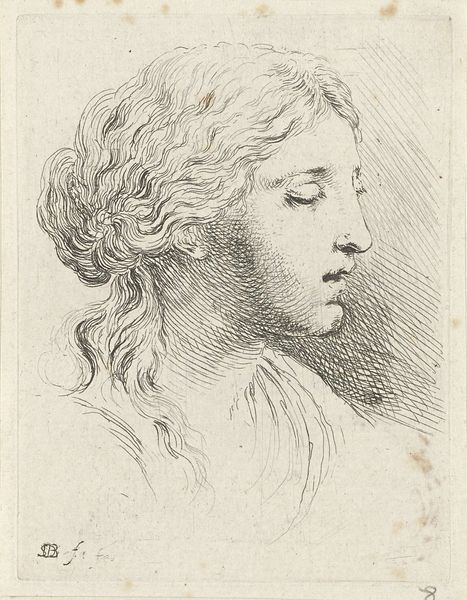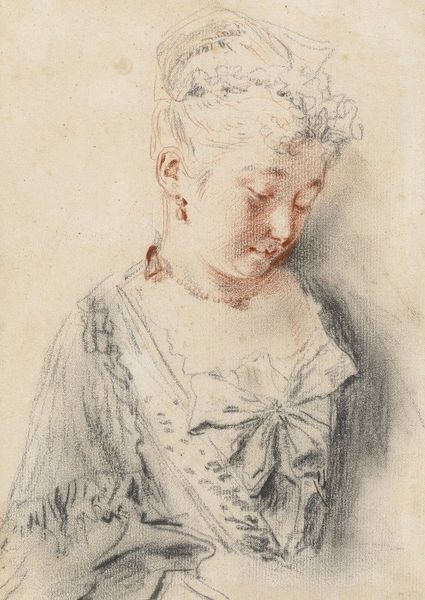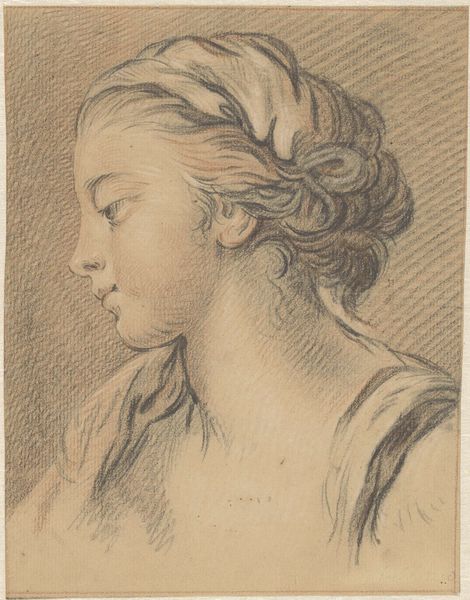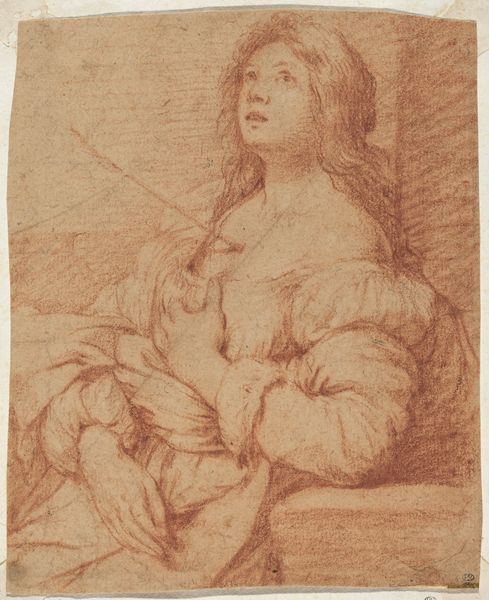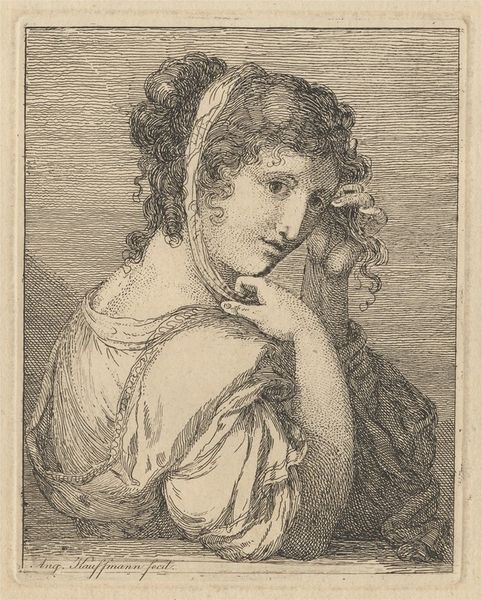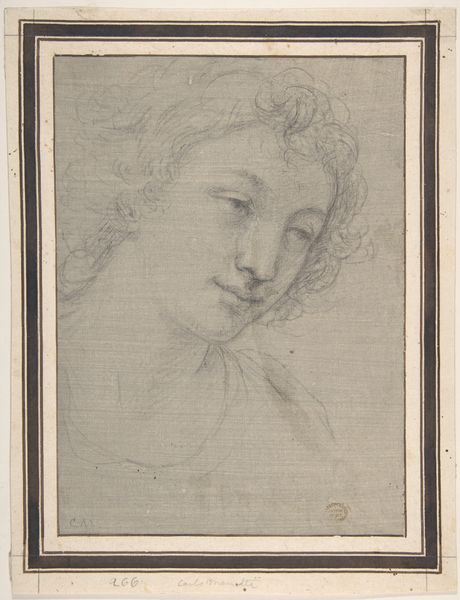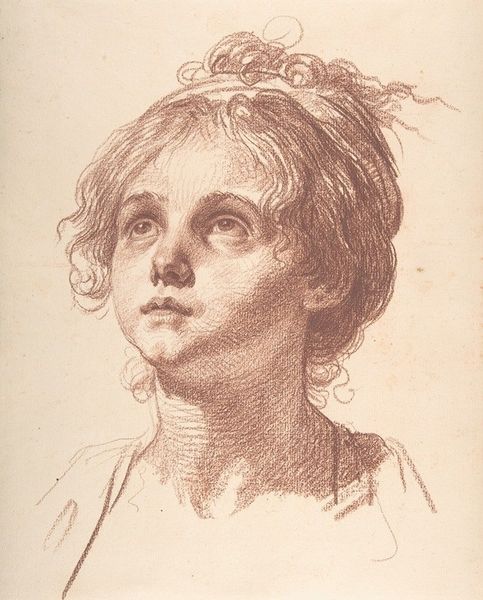
drawing
#
portrait
#
drawing
#
figuration
#
rococo
Copyright: Public Domain: Artvee
Charles-Joseph Natoire rendered this study of a "Head of a bacchante" in the 18th century with chalk, heightened with white, on paper. The chalk medium, which is made by grinding dry pigment and binding it with a gum or resin, allows for a delicate softness, especially well-suited to the subject matter: a woman associated with the Roman god of wine, Bacchus. Natoire has deployed a range of hues - red, black, white - to create the form. Notice the subtle gradations of tone, which give the face its three-dimensionality. Drawings like this one are associated with traditional studio practice, a mode of production involving both labor and skill. The artist may have made this study in preparation for a larger painting, or it may have been considered a work of art in its own right. When we consider the material qualities of an artwork, along with its making, we can better appreciate the artist's skill and intention, allowing us to move beyond simple distinctions between art and craft.
Comments
No comments
Be the first to comment and join the conversation on the ultimate creative platform.


